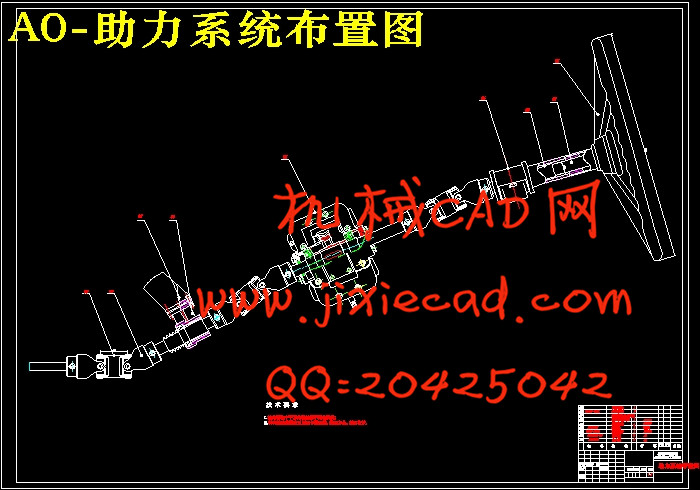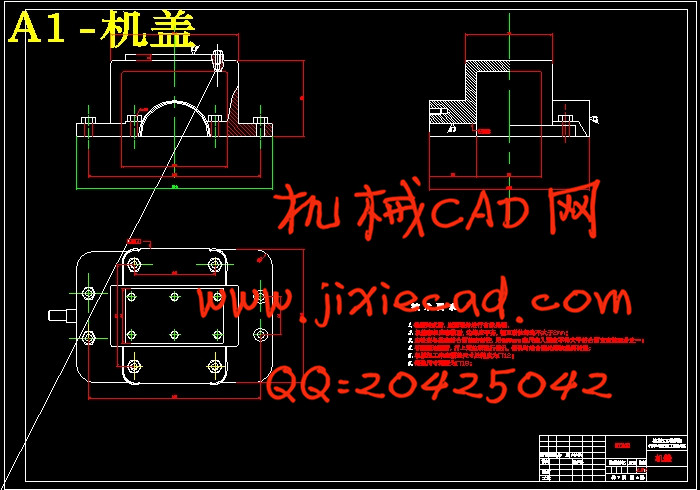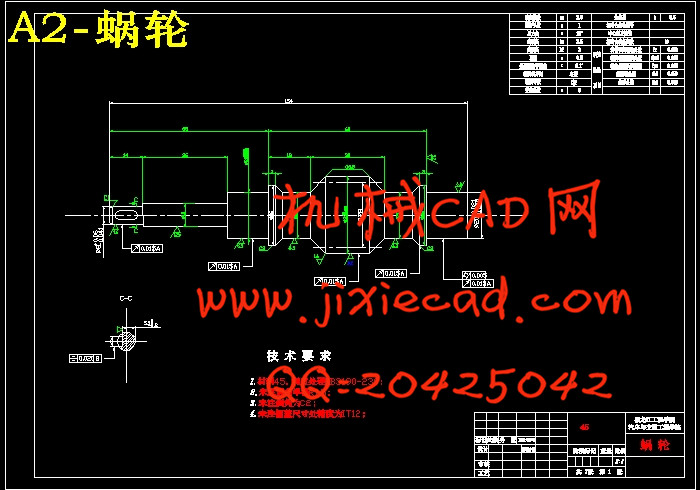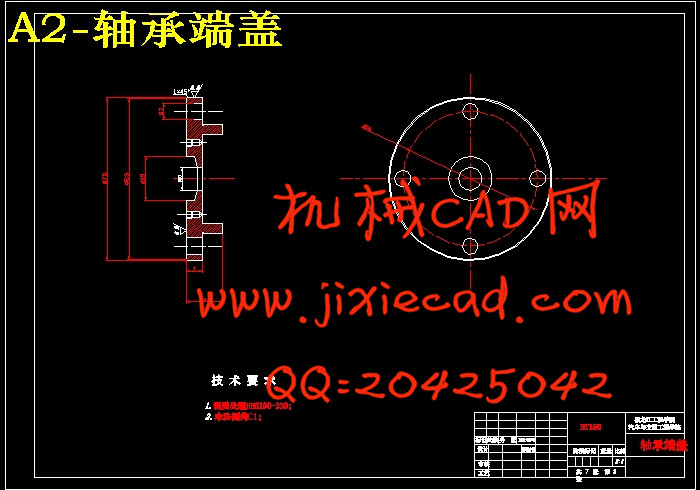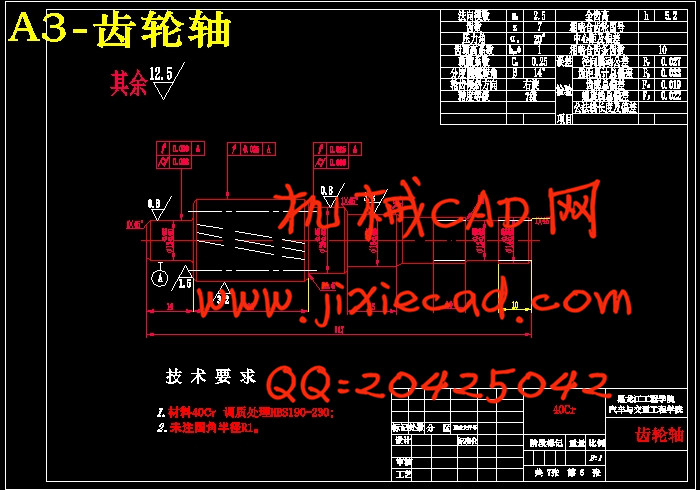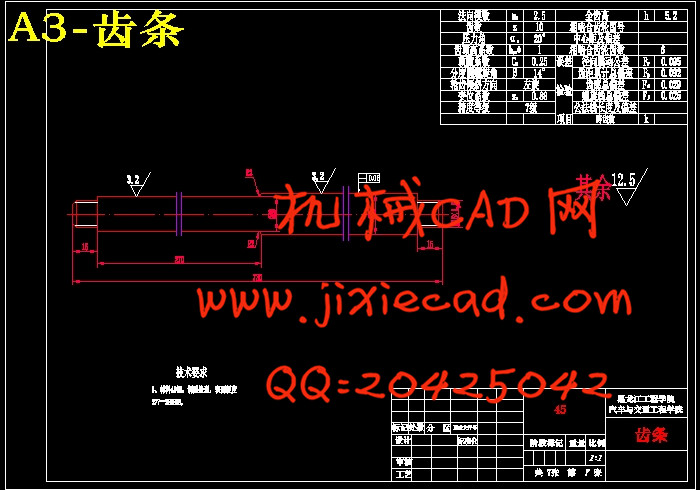设计简介
摘 要
电动助力转向系统就是在机械转向系统中,用电池作为能源, 电动机为动力, 以转向盘的转速和转矩以及车速为输入信号, 通过电子控制装置, 协助人力转向, 并获得最佳转向力特性的伺服系统。EPS汽车转向系统的性能直接影响到汽车的操纵稳定性, 对于确保车辆的安全行驶、减少交通事故以及保护驾驶员的人身安全、改善驾驶员的工作条件起着重要的作用。电动助力转向系统主要由减速机构和转向机构组成,减速机构把电动机的输出经过减速增扭传递到动力辅助单元,实现助力。由于蜗轮蜗杆传动比大,传动平稳噪声低故减速机构选为蜗轮蜗杆式。由于齿轮齿条式转向器,传动平稳,结构简单故转向机构选为齿轮齿条式。
本文设计研究了电动助力转向系统,对其工作原理做了阐述,对蜗轮蜗杆减速器中的蜗轮与蜗杆做了详细的设计计算,并进行了选型。同时对齿轮齿条式转向器的结构进行分析,并对其重要零件进行了设计计算与强度校核。
关键字:减速器;转向器;设计;齿轮;轴;校核
ABSTRACT
Electric power steering system is in mechanical steering system, use battery as energy, motor as a driving force, the steering dish speed and torque and speed of the input signal, through the electronic control unit, to help the human steering, and get the best to force characteristics of servo system. EPS automobile steering system performance directly influence to the car's steering stability, to ensure that the vehicle's safety driving, reduce the number of traffic accidents and protecting the personal safety of the driver, improve the working conditions of the driver plays an important role.Electric power steering system mainly consists of deceleration institutions and steering mechanism composition, slowing institutions to increase the output after slowing motor relay to the power auxiliary units twisted, realize the power. Because worm transmission large and stable transmission low noise so slow institutions elected worm type. Because rack-and pinion steering gear-component with simple structure, stable transmission, is steering mechanism selected for rack-and pinion type.
The paper presents the design of electric power steering system was studied, the principle of work of worm gear and worm reducer elaboration, the worm gear and worm to do a detailed design calculation, and a selection. Meanwhile to the structure of rack-and pinion steering gear-component are analyzed, and the important parts of the design calculation and strength check.
Keywords : reducer; steering gear; Design; Gear; Axis;Checking
目 录
摘要………………………………………………………………………………………………I
ABSTRACT………………………………………………………………………………II
第1章 绪 论…………………………………………………………………………1
1.1汽车的发展趋势……………………………………………………………………1
1.2汽车转向技术的发展………………………………………………………………1
1.3电动助力转向系统研究的状况及发展趋势……………………………………2
1.4电动助力转向系统设计的目的和意义…………………………………………3
1.5 研究的主要内容……………………………………………………………………3
第2章 电动助力转向系统主要参数的确定……………………………………4
2.1电动助力转向系统的分析…………………………………………………………4
2.1.1电动助力转向系统的工作原理…………………………………………4
2.1.2电动助力转向系统的类型………………………………………………4
2.2 助力电动机的选择………………………………………………………………6
2.2.1电动机的概述………………………………………………………… 6
2.2.2电动机的参数计算…………………………………………………………7
2.3 电磁离合器的选择………………………………………………………………8
2.4 扭矩传感器的选择………………………………………………………………9
2.5 本章小结………………………………………………………………………………9
第3章 电动助力转向系统减速机构参数的设计…………………………10
3.1减速机构的分析及布置形式的确定…………………………………………10
3.2蜗轮蜗杆材料的选择………………………………………………………………11
3.3普通圆柱蜗杆传动的主要参数及几何尺寸计算………………………………11
3.3.1设计要求……………………………………………………………………11
3.3.2选择蜗杆传动类型…………………………………………………………11
3.3.3蜗杆模数及分度圆直径的确定…………………………………………11
3.3.4蜗杆与蜗轮的主要参数及几何尺寸的确定…………………………13
3.4蜗轮齿根弯曲疲劳强度的校核……………………………………………………15
3.5本章小结………………………………………………………………………………17
第4章 减速机构轴和轴承的设计及校核……………………………………18
4.1轴的概述………………………………………………………………………………18
4.2转向轴的设计与校核………………………………………………………………18
4.2.1转向轴的设计……………………………………………………18
4.2.2转向轴的校核……………………………………………………20
4.3蜗杆轴的设计及校核………………………………………………………………23
4.3.1蜗杆轴的设计……………………………………………………23
4.3.2蜗杆轴键的选取……………………………………………………23
4.3.3蜗杆轴的校核……………………………………………………23
4.4轴承的选取与校核………………………………………………………………26
4.4.1轴承的选取…………………………………………………………26
4.4.2轴承的校核…………………………………………………………26
4.5 本章小结…………………………………………………………………………28
第5章 齿轮齿条式转向器的设计………………………………………………29
5.1齿轮齿条式转向器的概述…………………………………………………………29
5.1.1齿条的概述……………………………………………………………………29
5.1.2齿轮的概述……………………………………………………………………29
5.1.3设计要求……………………………………………………………………29
5.2齿轮齿条材料的选择与参数的确定…………………………………………29
5.2.1材料的选择……………………………………………………………………29
5.2.2计算许用应力………………………………………………………………29
5.2.3初步确定齿轮的基本参数的主要尺寸………………………………30
5.2.4确定齿轮传动主要参数的几何尺寸……………………………………31
5.2.5齿轮强度校核………………………………………………………………32
5.3轴设计与轴承的选择………………………………………………………………34
5.3.1轴的设计……………………………………………………………………34
5.3.2轴的校核……………………………………………………………………34
5.3.3轴承的选取……………………………………………………………………35
5.4 本章小结…………………………………………………………………………36
结论…………………………………………………………………………………………37
参考文献……………………………………………………………………………………38
致谢……………………………………………………………………………………39



